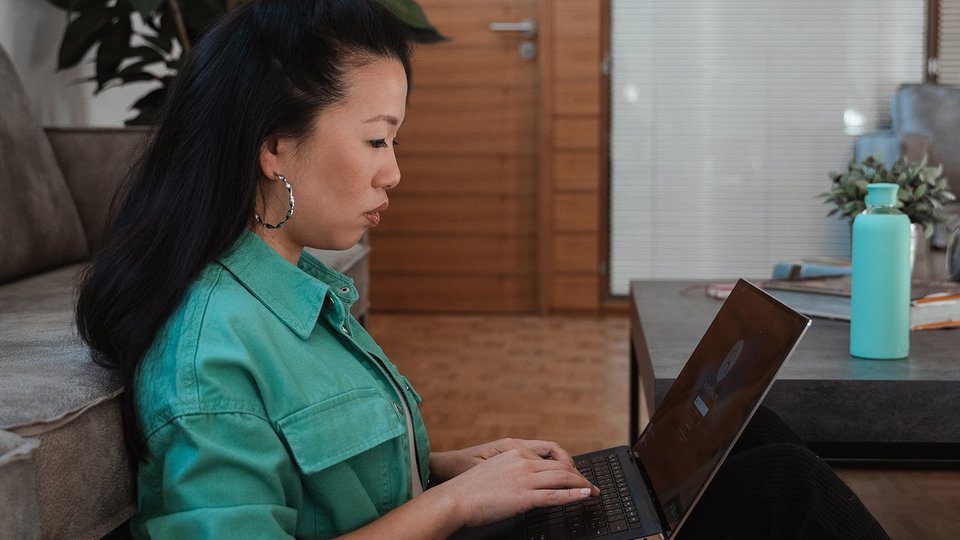Increase productivity at work: 10 tips for productive working
|

reading time: ca. 6 minutes
- Being productive means increasing your own efficiency and organising your work well. In other words, getting more done without increasing the amount of time spent on it.
- An excessive workload, distractions, multitasking, and a lack of breaks are among the biggest productivity killers.
- A few tips can help to increase productivity at work. A well-planned day with sufficient breaks is important. Prioritising tasks, healthy routines, and a structured workplace also contribute to productive work.
- Proper time management plays a major role. Methods such as Pomodoro, Getting Things Done, and the Pareto principle help you to organise your working time wisely.
Productive working – what exactly does that mean? Long working hours, overtime, and lots of meetings say nothing at all about productivity. What is much more important are good results and efficient work processes. With our 10 tips, you can increase your own productivity, whether in the office or working from home.
Satisfaction and productivity go hand in hand: those who approach their work with motivation and feel comfortable at their workplace can achieve better results in most cases. And that in turn increases the enjoyment of your own work and reduces stress.
Being productive does not mean working as many hours as possible. It is much more important what you achieve in the time you have available.
We show you little tricks and methods you can use to utilise your working time particularly efficiently – and which productivity killers you should avoid.
What does productivity at work mean?
Real productivity cannot be measured by the amount of working time or the hours of attendance. Rather, it is about the qualitative results that are achieved in a given time.
As an economic key figure, productivity is the ratio of output, i.e. the return, to input, i.e. the effort invested.
However, output and input can have very different meanings depending on the profession and activity. Output in particular is not always easy to measure. Creativity or quality, for example, cannot be defined in concrete numbers.
Productive work means creating more without spending more time on it.
1. Set priorities
There is one thing that helps with stress and an excessive workload: prioritising. With the right prioritisation, to-do lists, and good planning, work can be managed better.
Various methods are useful here:
In the ABC analysis, you divide all your tasks into three categories: A (very important), B (important), and C (less important). Concentrate on the A tasks first before you do any other work.
In the Eisenhower matrix, you differentiate between importance and urgency. Urgent means that there is time pressure or a risk of negative consequences if the task is not completed on time. Important means that although there is no specific deadline, the work contributes to achieving your long-term goals.
Divide your tasks into four quadrants:
- Urgent and important: Complete these tasks first.
- Important but not urgent: Schedule these tasks for later.
- Urgent but not important: Try to reduce the time required for the task or delegate the work.
- Not urgent and not important: These tasks are unnecessary and can be discarded.
2. Develop routines
Productivity doesn't just start at the workplace. Healthy routines such as a good diet, sleep, and physical activity form the basis for being able to work effectively.
Those who don't get enough sleep, hardly exercise, or generally lead an unhealthy lifestyle often have more trouble concentrating. Therefore, take care of yourself and your body and practise good self-management. Establish routines that are good for you and energise you – for example, regular exercise in the office.
3. Organise your time wisely
Planning your day well is key. Without planning, many people tend to either put things off (known as procrastination) or take on too much at once.
Time management methods for more productivity
With the right time management, you can increase your productivity and keep an eye on your priorities. There are various time management methods that you can use for this.
Time blocking: Here, the day is divided into fixed time slots to which certain tasks are assigned. These could be special projects, answering emails, organisation, or planning, for example. This gives you a fixed structure to your working days, prevents you from being distracted so easily, and allows you to focus better. Important: Also plan buffer and breaks!
Pomodoro technique: With this method, you alternate work and break sections. In a work block of 25 minutes, you work on a task, preferably without interruption or distraction. The next block starts after a subsequent five-minute break. After four work blocks, a longer break of 30 minutes is taken. By alternating between concentration and breaks, you stay focussed for longer and do not get tired as quickly.

GTD method: GTD (Getting Things Done) involves writing down all to-dos, including small tasks and ideas. This creates a large, unorganised list: the inbox. All tasks are then categorised, divided into individual steps, and prioritised. This system is designed to improve self-organisation. It also keeps your head clear, as everything is immediately written down.
Pareto principle: The Pareto principle – also known as the 80-20 rule – states that 20 per cent of tasks provide 80 per cent of results. In concrete terms, this means that the most important tasks with the greatest output are identified and processed first. This rule helps you to prioritise your tasks and ensures that you use your time as efficiently as possible.
Two-minute rule: The two-minute rule suggests that you immediately complete all incoming tasks that can be finished in less than two minutes. The principle can be combined well with other time management methods, for example with the GTD system.
4. Plan breaks
Regular breaks are essential. This is the only way your body can recover and overcome productivity lows.
Regardless of whether you work with a time management system or work flexibly throughout the working day: Plan regular breaks to clear your head and recharge your batteries. Ideally, you should combine these breaks with fresh air and exercise, such as short walks or stretching sessions.

5. Avoid multitasking
Humans naturally aren't good at multitasking – our brains simply aren't made for it. Nevertheless, we try to do several things at the same time far too often and then get annoyed when everything takes even longer. Productivity suffers, while at the same time we are more prone to making mistakes.
Make sure you only take on one task at a time. You will not only be faster, but also achieve better quality results.
6. Improve the workplace
The right workplace equipment is also important. Whether in the office or at home, an optimised workplace makes more of a difference than most people think. This includes, for example:
- Sufficient lighting with as much daylight as possible
- Sufficient space on the desk
- Ergonomic posture
- Regular ventilation
- If the noise level is high: use a headset
Extra tip for working from home: Depending on the circumstances, it is not always possible to create the ideal space at home. However, even small measures can greatly improve the situation: An external monitor or an elevation for your notebook, a seat at the right height (if necessary, work with cushions or pillows), and standing up regularly counteract an unhealthy sitting posture.
By the way: A tidy desk often works wonders. That's why you should tidy up thoroughly every day after work, both in the office and at home.
7. Minimise distractions
Among the biggest productivity killers are the smartphone and social networks: checking Instagram, answering a few WhatsApp messages, or skimming the latest news from our contacts.
The problem is that you keep interrupting what you're actually doing and find it harder to get back to work.
You should therefore always plan times when you avoid distractions. For example, use the do not disturb mode. Or switch off all devices that you don't need for the current task and take a short digital break.
8. Integrate tools
In addition to various time management methods, there are also several useful tools that support you in your work:
- Tools for project and task management
- Time management tools, for example for time tracking or daily planning
- Digital notebooks and tools for documentation and mind mapping
- Digital to-do lists
- Tools for communication and teamwork
- Focusing tools that, for example, block distracting websites and apps
- AI tools, for example for automating routine tasks or research
9. Utilise your biorhythm
It also makes sense to know your own biorhythm. When is the most productive time? When are typical slumps? If you are aware of your strong times and utilise them, you will work much more efficiently.
Keep your personal productive time free for essential tasks and activities that require a high level of focus. You should avoid meetings, phone calls, and any distractions during this time slot.
10. Accept help
When the workload gets too heavy: Learn to say no at times, delegate tasks, or ask others for help.
Exchange ideas with others. For example, you can get helpful tips, recommendations, and valuable feedback from those around you.




